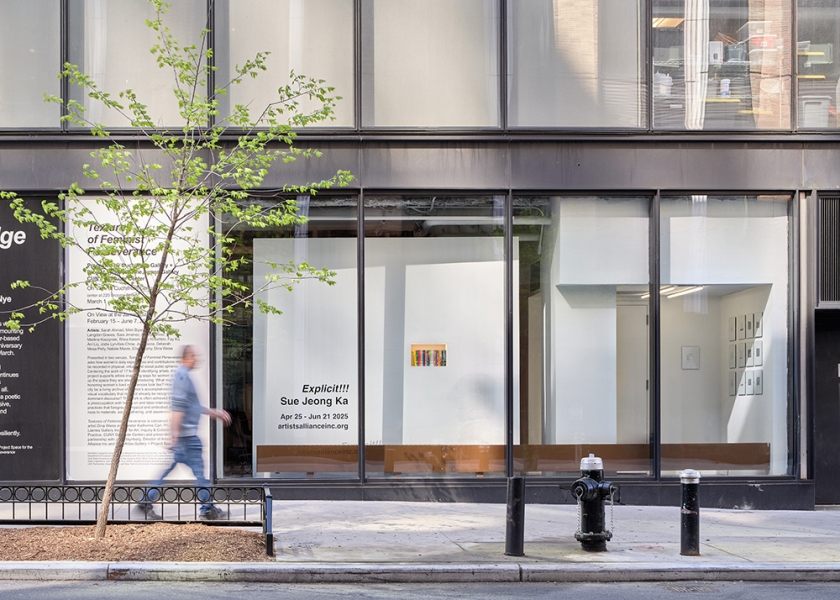Site-specific installation, manga, 3D printed kinetic sculpture, digital drawing, instruction
Commissioned by Cuchifritos Gallery + Project Space and Artist Alliance Inc.
Curated by Jodi Waynberg
Funded by New York State Council for the Arts and Lower Manhattan Cultural Council
Interview by Calvin Reid on Publishers Weekly
Explicit!!! builds on my ongoing investigation of the censorship practices within the U.S. carceral system, focusing on publication bans across 26 states. Through my research, I aim to reveal how book censorship operates as a tool of racial, sexual, and cultural control. I illuminate biases that specifically target works by marginalized authors, especially those presenting sexually liberal narratives or culturally non-Western perspectives.
For this exhibition, I present a series of site-responsive works, including kinetic sculptures, large-scale wall installations, and a public program series that fosters vibrant dialogue among artists, researchers, and community members in the Lower East Side and Chinatown. These works invite visitors to reflect not only on prison censorship but also on the broader patterns of content suppression in public education and cultural institutions, systems intricately intertwined with the policing of racial and sexual knowledge.
The core of Explicit!!! is my data analysis of manga—a genre of comics and graphic novels predominantly created by East Asian artists. Across various state prison systems, manga is frequently classified as “sexually explicit,” leading to its prohibition in prison libraries and preventing its distribution to incarcerated readers. In parallel, New York State public schools have removed manga titles, such as “Assassination Classroom,” citing moral concerns regarding their content. These acts of censorship—whether in prisons or schools—are not isolated incidents; they embody a broader infrastructure that dictates which stories are acceptable and whose cultural expressions are silenced.
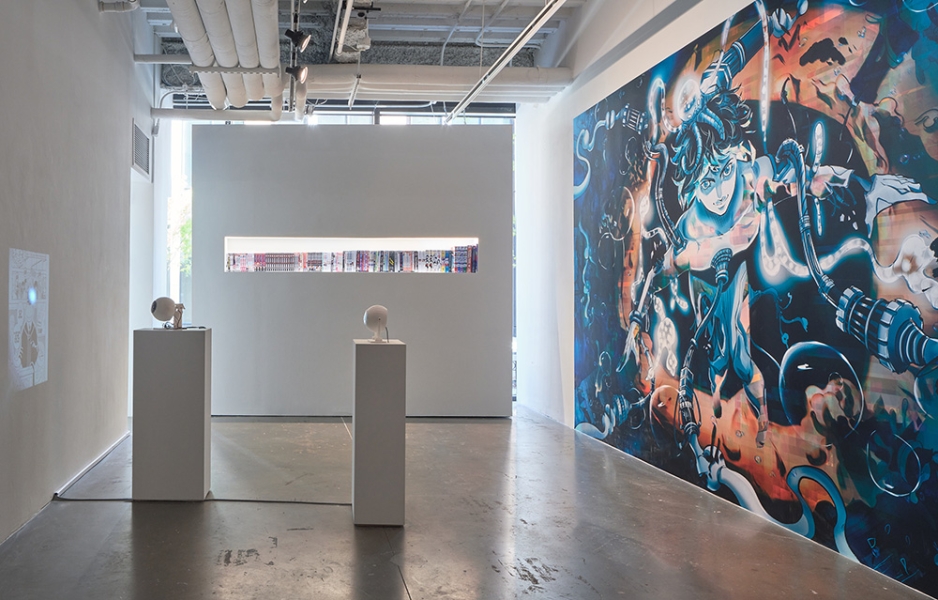
The Retinal Archive is an interactive sculpture that captures and visualizes the artist’s eye movements as she reads censored manga pages. Utilizing eye-tracking technology, Ka records her gaze as she navigates these forbidden materials. The collected data is transformed into a heatmap—a living archive of gaze, desire, and curiosity—which projects back onto the manga pages themselves. This results in a kinetic dialogue between the bodily act of reading and the institutional act of censorship, mapping what the eye is drawn to and what the system attempts to erase. Alongside the censored pages, two distinct lights represent different modes of seeing: a red light symbolizes surveillance, while another signifies the artist’s personal reading of the censored materials. These contrasting illuminations are deliberately juxtaposed, highlighting the tension between imposed oversight and individual perception.
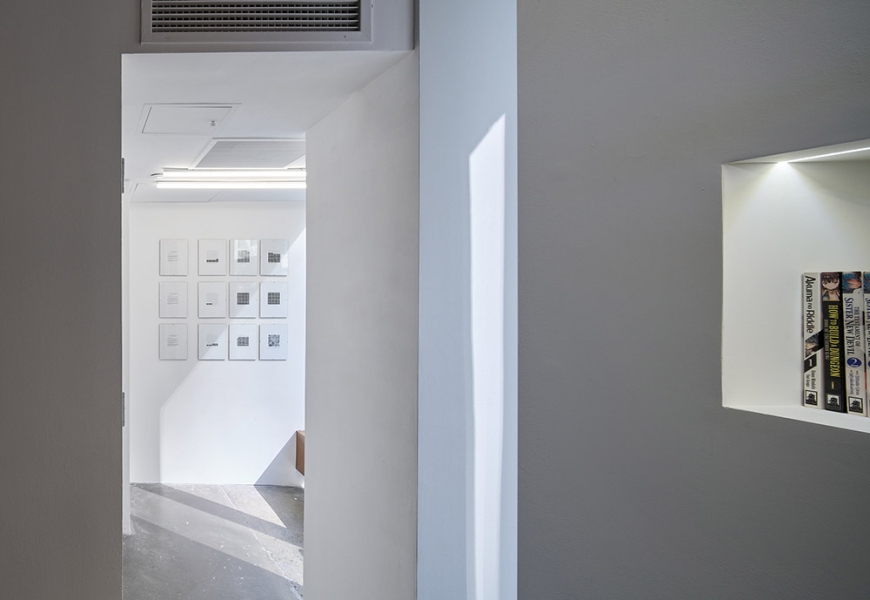
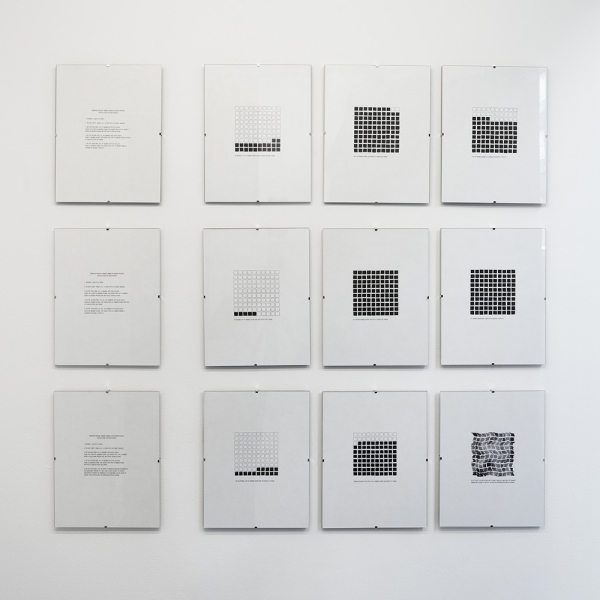
Graphing Erasure is an installation of drawings that visualizes banned manga datasets created with the San Francisco Public Library’s Jail and Reentry Services program and graduate students from the Master of Information and Library Science program at the University of California, Los Angeles. Quietly situated in the gallery’s back room, the work charts layered information on manga censorship across the U.S., drawing from state-level data to surface patterns, often obscured from public discourse.
Each drawing contains multi-layered insights: the percentage of manga banned in a given state, the proportion authored by Asian creators, and, within those, how often Asian women’s bodies appear. Through this meditative visual process, Graphing Erasure invites viewers to consider how institutional logics of protection usually operate as mechanisms of erasure and reinforce the marginalization of specific narratives, identities, and forms of representation.
Rendered in a minimalist aesthetic, the drawings incorporate what the artist refers to as warm data—a term coined by Nora Bateson to describe relational information about the interdependencies and contexts within a complex system. Here, warm data is used to materialize emotion as a form of feminist resistance. Rather than manipulating affect, the work highlights how emotional and social dimensions of censorship, especially those tied to race and gender, can be made visible through a slow, relational approach to data.
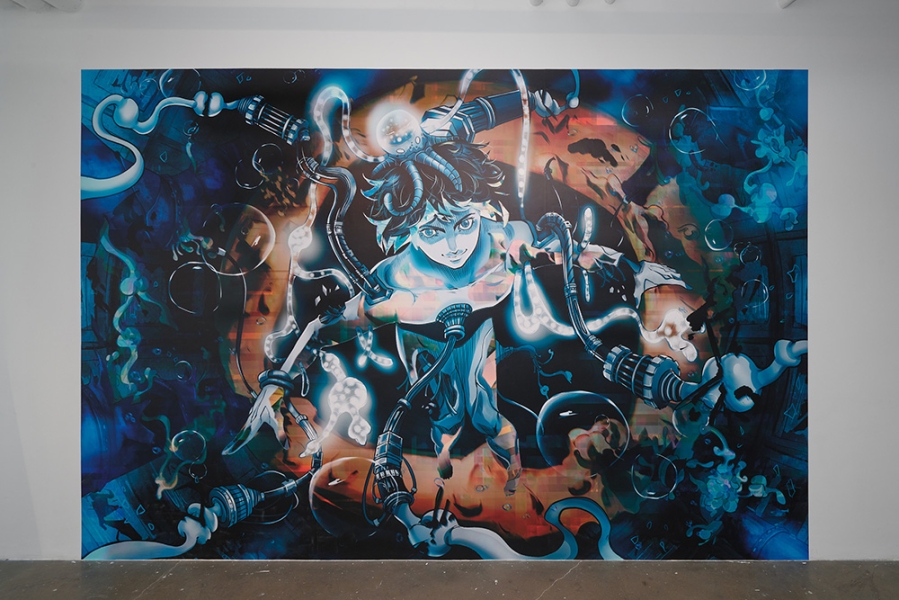
Ex parte Erasure (The Dream of the Forbidden Code) combines historical imagery, contemporary censorship, and speculative visual storytelling, connecting the school-to-prison pipeline with the racialized and sexualized perceptions of Asian and Asian American in media. Presented as a large wall vinyl, the work merges characters from banned manga with symbolic representations of data flows and the school-to-prison pipeline. Motoko Kusanagi from the “Ghost in the Shell”—a work banned in multiple U.S. prisons—is depicted with her signature cybernetic cords, showing her cyborg body that is replaced with her original. These cords extend across the wall, intertwining with the tentacles of the teacher Koro (octopus-looking figure) from “Assassination Classroom,” a manga removed from NYC public schools. This visual connection illustrates how prison and school censorship work together to create a pipeline of control, starting with the policing of knowledge in childhood and continuing with the regulation of intellectual and sexual freedom in incarceration.
This installation transforms the gallery wall into a speculative site of resistance, where censored knowledge, racialized surveillance, and the rich history of Asian visual culture converge into a chaotic yet vibrant network—a declaration of refusal to remain silent within systems designed to erase diverse narratives.
